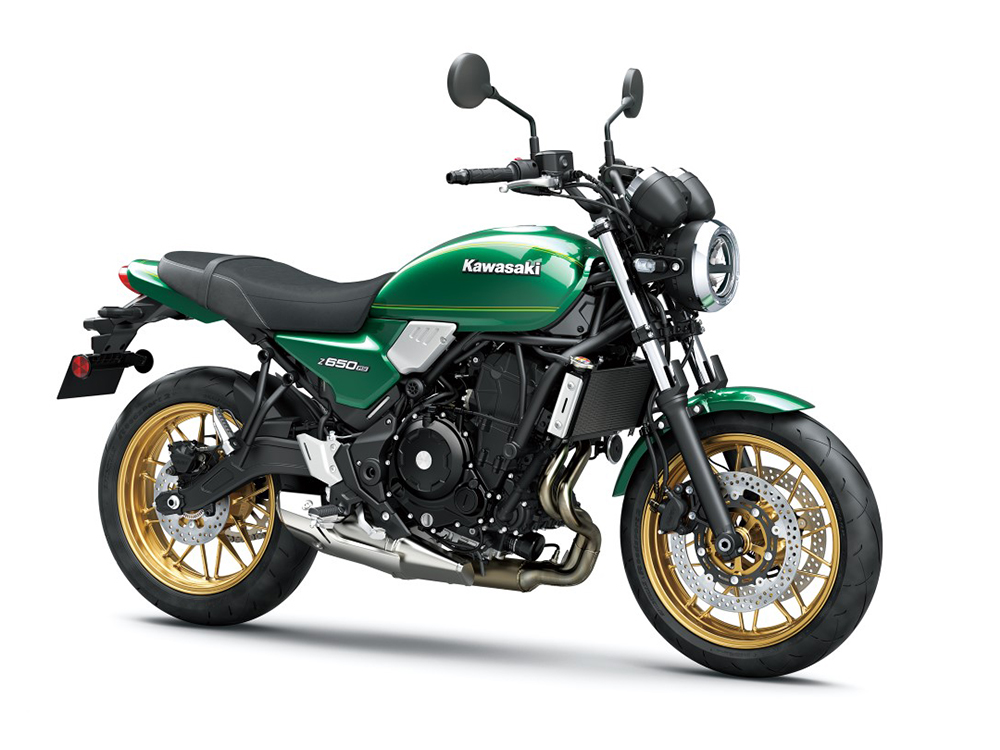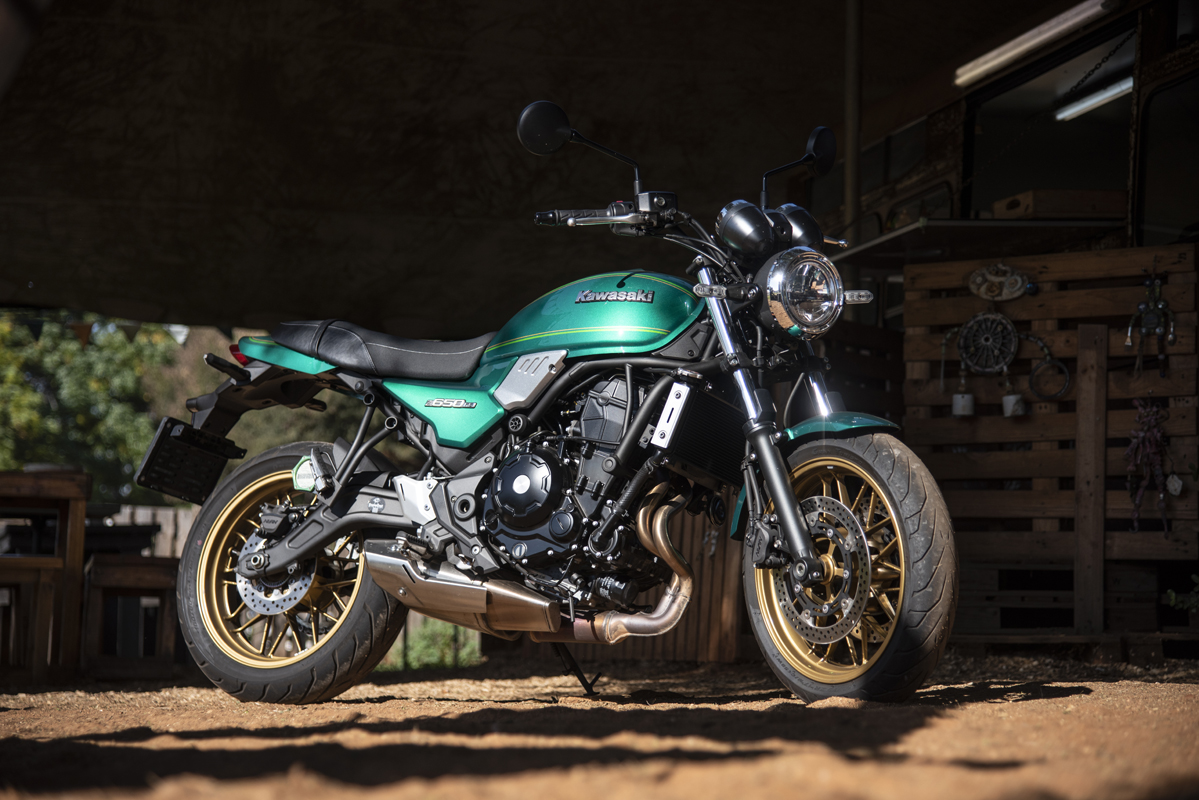
Are modern classic motorcycles just a fad or do they offer more than just nostalgia and fashionable good looks? The modern classic segment has picked up steam in the last 10 years and with it, we are starting to see some seriously exciting models for 2024. These days modern classics can be found in various categories, we are talking about your traditional roadster, scrambler, cruiser, sports bike and even your adventure bike segment—they are just about everywhere.
Modern classics or retro motorcycles haven’t always received the love they deserve, similar to adventure and naked motorcycles. Fast forward to the present day and the naysayers that thought the adventure motorcycle craze would die or that no one would be interested in naked street fighters come the late 2000s have been proven wrong, and have probably joined the masses. We have seen this time and time again where the public and riders slowly changing opinions have surprised us with booms in the segments that should have, in theory at least, failed.
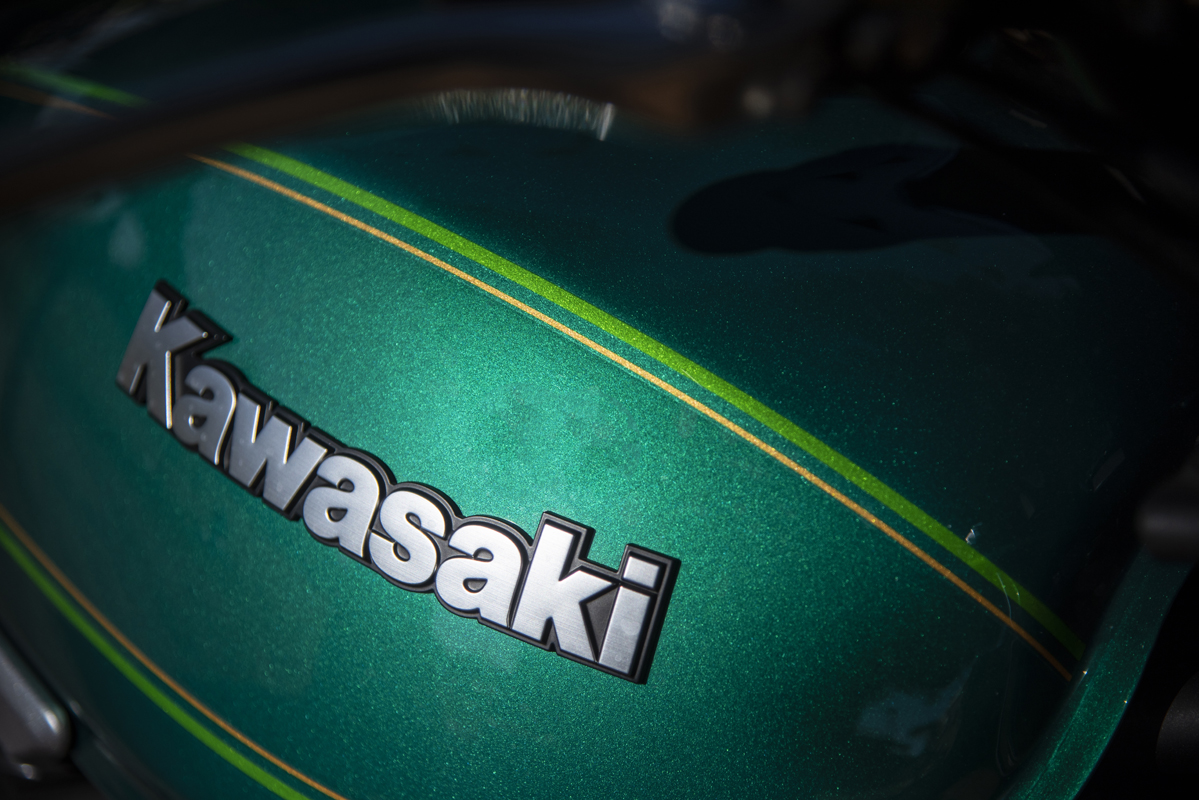
Modern classics, however, haven’t really been part of the boom, but rather a niche class of motorcycle that seems to have stuck around and has steadily grown. With most of us having very little knowledge of this class of motorcycle it’s easy to listen to all the stereotypical advice and opinions that “retros” are just for hipsters. Just the thought of growing a beard, filling an arm full of ink and wearing check with sneakers can immediately sound off-putting to most. Fear not, this ideology or stereotype couldn’t be further from the truth.
For one, I own and daily my modern classic and no I don’t have any piercings that get caught in my helmet liner. I ride a modern classic not only because it’s a flash of all that was good from the past, but because it’s equipped with all the modern goodies, handles like a dream, stops on a dime, starts every time and looks damn good whether its needle is in the red or when the bike is leant over onto its centre stand.
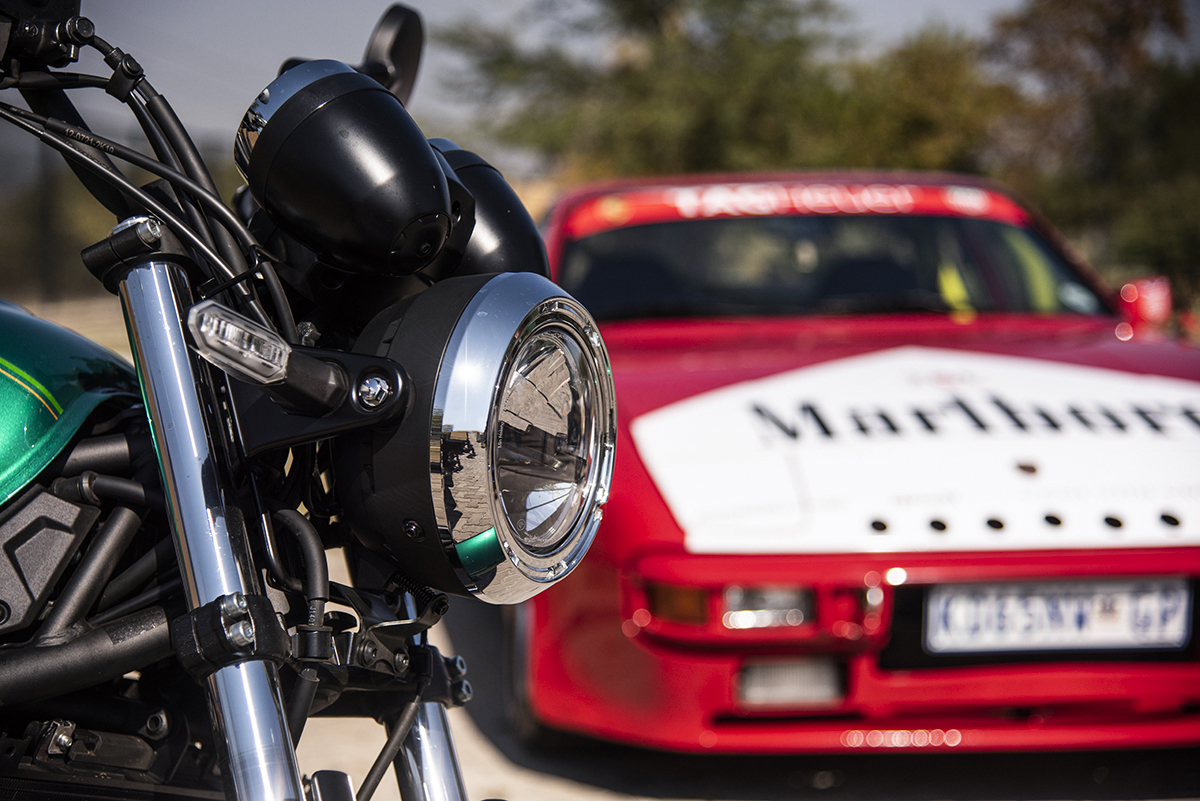
My point is, that riding a modern classic and the reasons for doing so shouldn’t be any different from riding any other class of motorcycle. We all ride for similar reasons. You don’t need to know the history or the origin of what you ride. I’ve been guilty of thinking that anyone who rides a superbike must watch WSBK or MotoGP, but they don’t and it’s ok not to. We ride not to fit into a mould but to enjoy our rides and to experience freedom, a rush and other times, just travelling to new and wonderful places on this planet we live on.
Before I’ve even started talking about our long-term Kawasaki Z650 RS, I think I’ve just described who it’s for—the jump-on-and-forget-about-the-rest kind of motorcyclist.
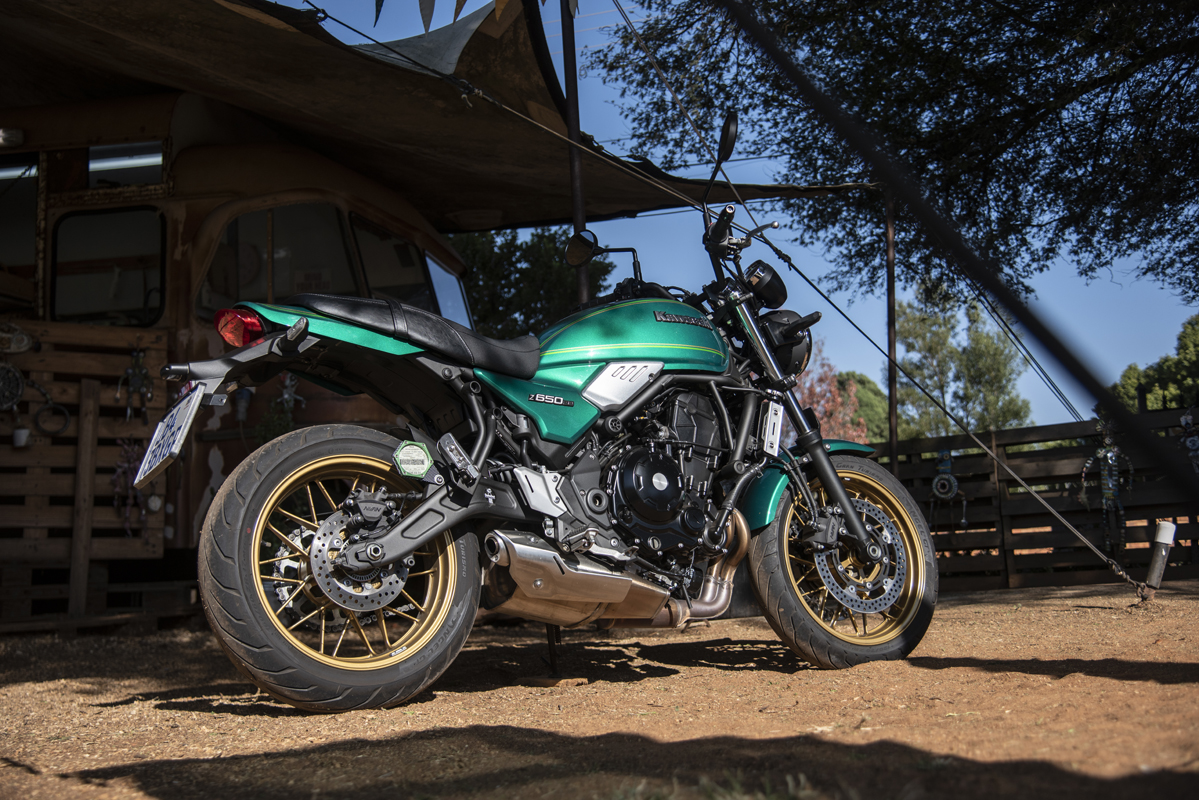
For some time KMSA’s pride and joy, the Kawasaki Z650 RS was mine to look after and to use as if it were my only means of transport, and let’s just say, it felt right at home in my garage too. The sibling to the Z900 RS pays tribute to two of Gyoichi ‘Ben’ Inamura’s iconic and legendary designs. We are talking about the trendsetters of the 70s, the 1972 Kawasaki Z1 and the smaller but still 750-giant killer, the 1977 Kawasaki Z650.
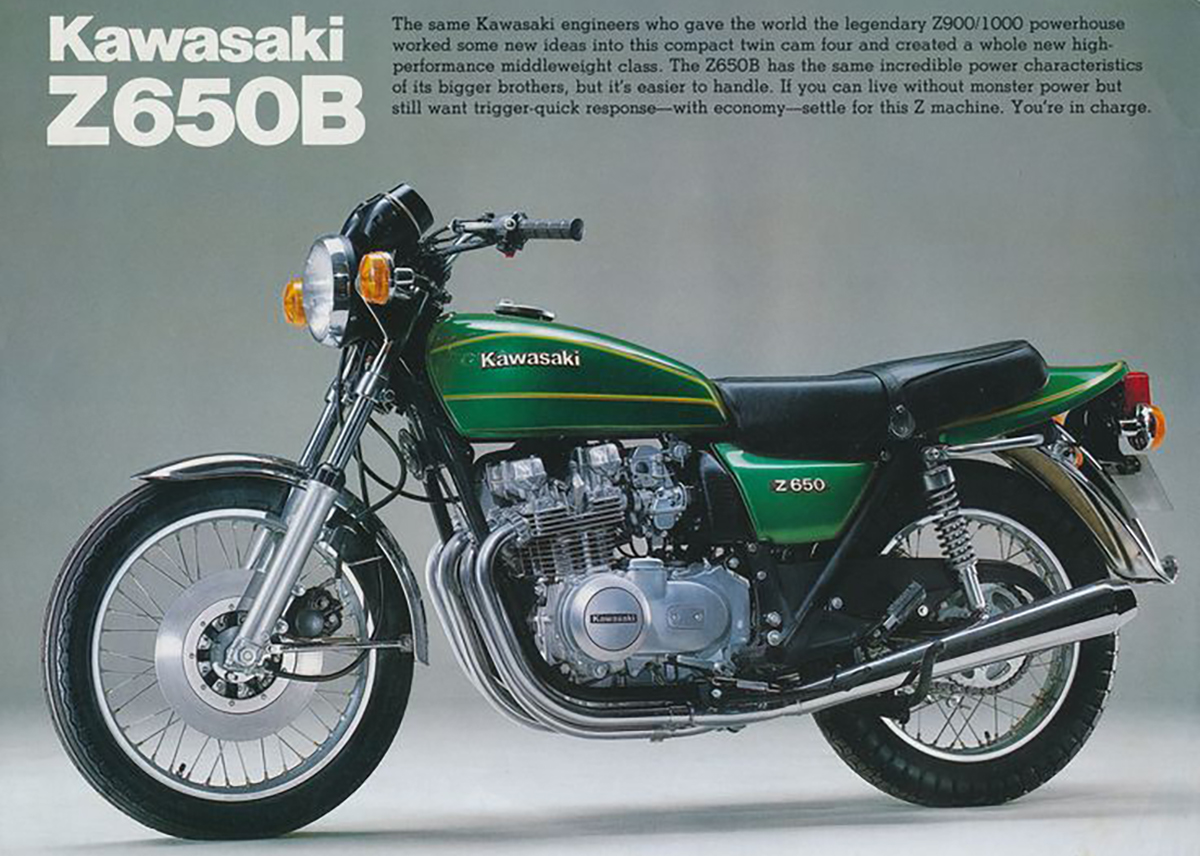
To say that the new ‘Z’ carries DNA over from the original “Zeds” wouldn’t be a complete lie, as Kawasaki’s designers and engineers have used their talents to bring in design elements, paintwork and character fullness from the engine not to mimic but rather to pay tribute.
The classic suit and tie on this Z echoes the 70s starting from its teardrop 12-litre fuel tank, flat and comfy seat, round LED-powered headlight and ducktail rear piece, thin 20-spoke cast wheels that look like spokes, telescopic forks, round speedo and rev counter, round pointy mirrors and lastly the unmistakable candy emerald green paintwork with subtle pinstriping and laser cut Kawasaki emblems.
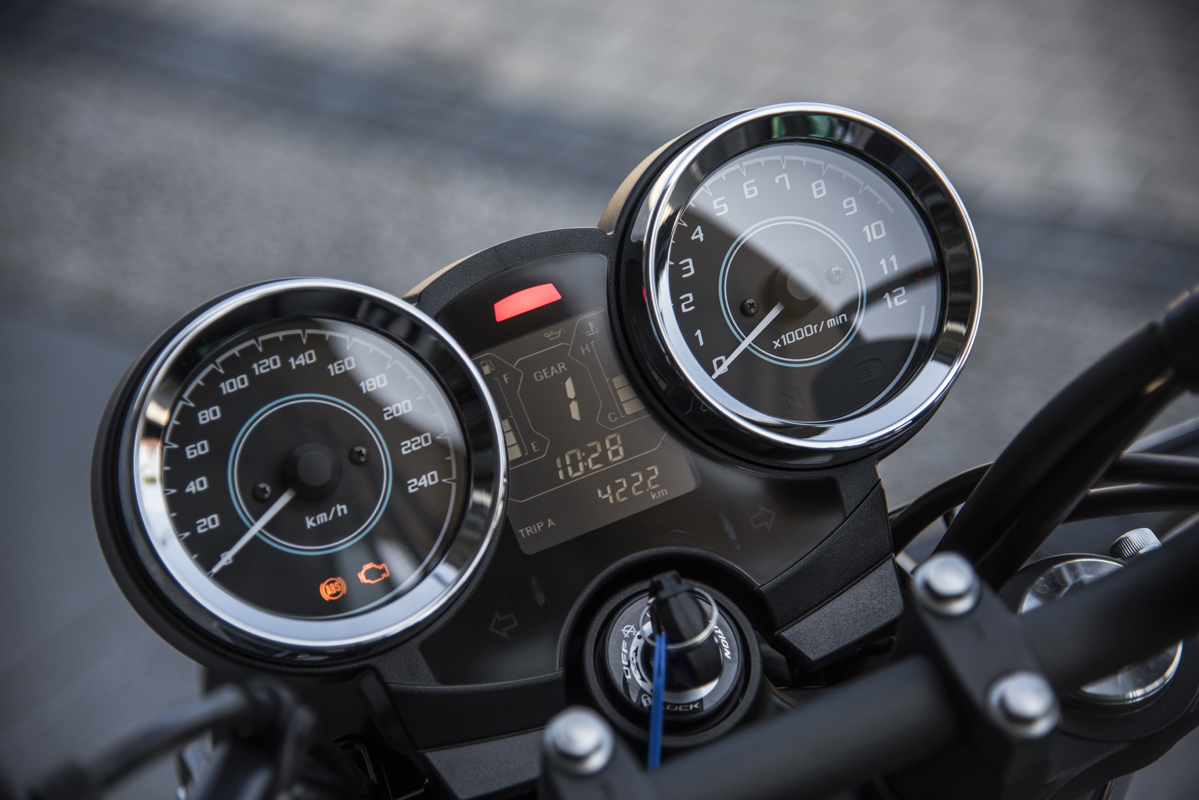
If looks could kill the Z650 RS would have you in your grave convinced it was right out of the ’70s, I wouldn’t blame you either. It is very common to have people walk up to you and say that they used to know someone who owned one or ask how much it cost to restore. Young, old, male, female and you name it, everyone has questions and an eye on this handsome ride and when you throw a leg over the good vibes continue.
Not an inline four-cylinder like the Mac Daddy, but rather a friendly parallel twin that we have all come to know and enjoy over the years in the Ninja 650, Z650 and Versys 650. Zero riding modes, no traction control and ride by cable make the bike both predictable and give you access to 68 hp at 8,000 rpm and 64 Nm of torque at 6,500 rpm with no roadblocks. Staying clear from an inline four also allows Kawasaki to keep production costs low, as well as weight and servicing costs. The daily commuters will also appreciate the 12,000 kilometres servicing intervals.
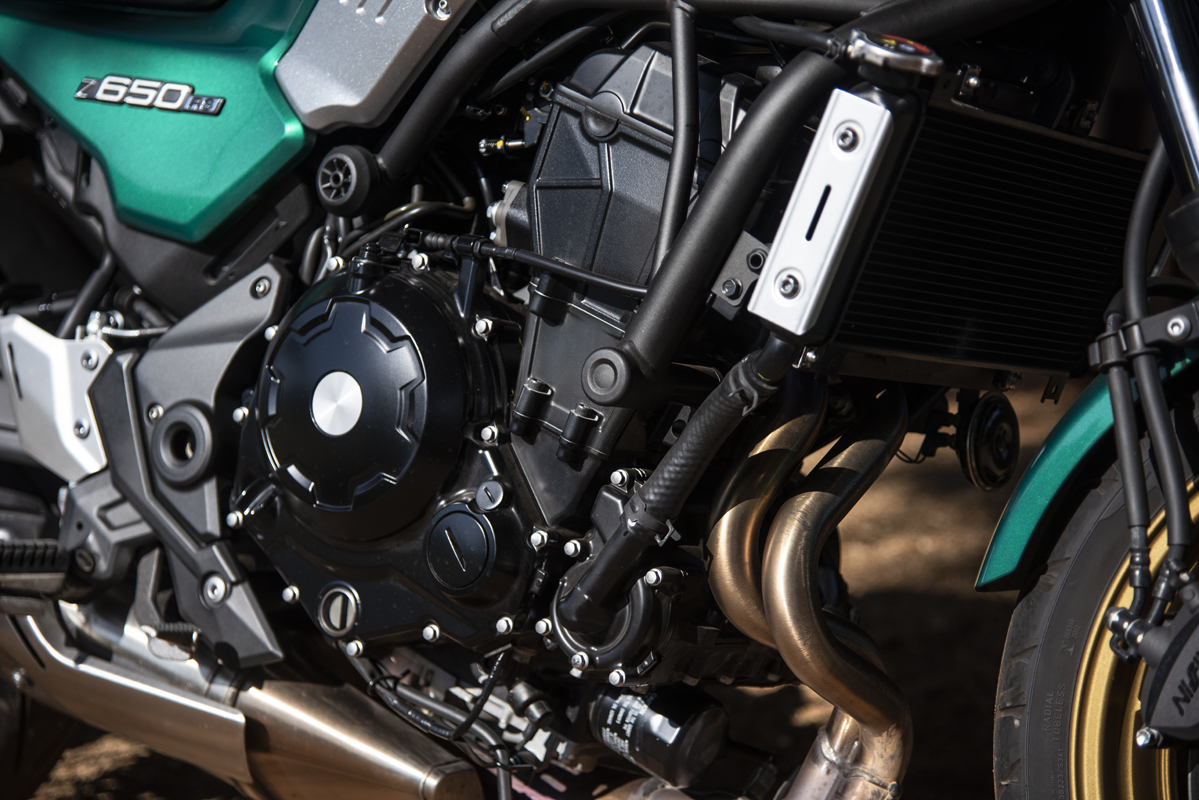
Over the years Kawasaki has refined the 649 cc parallel twin from agricultural to a much smoother and characterful motor. I usually find myself short-shifting as low as 2,000 rpm and cruising around town in 5th or 6th gear at around 60 km/h at 2,000 rpm—riding off the wall of torque. Once on the open road, there’s no need to push the needle near the redline either, as the little Zed is torquey enough to provide plenty of fun in the twisties from low down in its rpm range and its midrange pulls well between 4,000 rpm and 6,000 rpm. I must be honest and say I do love the feeling of going up and down through the gearbox, it feels smooth but lets you know that you’ve selected a gear—typical Kawasaki.
At around 130 km/h plus on the speedo, the fuel consumption is around 5.5 l/100 km, which doesn’t give you much more than a 200-kilometre range due to the tank size. However, in town and around I was averaging 4 l/100 km (25 km/l), which gives you just over 300 km of range for the daily commute.
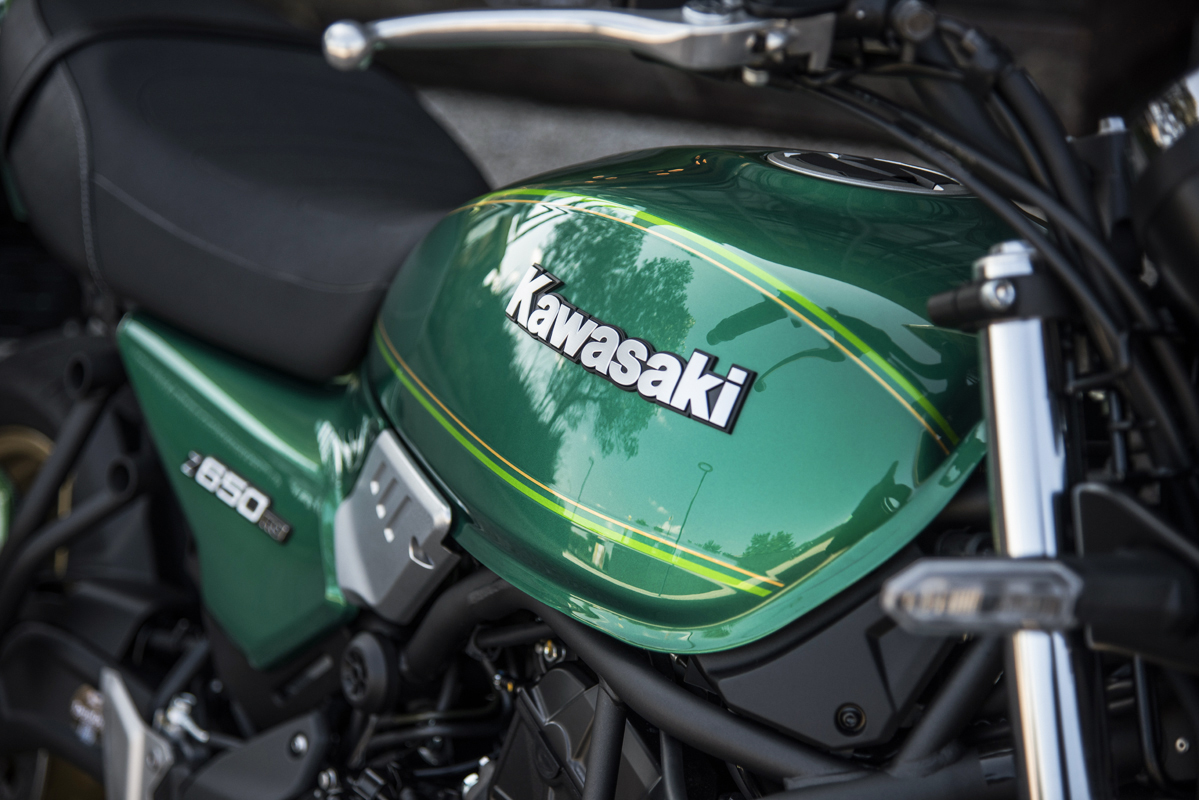
Photo credit: Bjorn Moreira / ZA BikersHandling and comfort on the Z650 RS go hand in hand, in other words, it’s not made for scratching pegs, but rather the daily rough and tough and the Sunday cruise. The seat height is approachable at 820 mm and greets you with a comfy wide-spread seat that both rider and pillion can enjoy many km on. Although not a street racer, the non-adjustable suspension is plush and damped well enough to allow for some magic carpet rides on our bumpy roads. The rear is a tad bit springy if I have to be nit-picky, but again this is just my preference, as I prefer a firmer set-up at the rear, for more precise handling.
The Z650 RS is as stripped back as a modern motorcycle can be in 2024 and as mentioned, it’s a motorcycle for those who want a jump-on-and-go motorcycle that will give you countless reliable km, smiles per mile and good conversations at every stop. Riding many different motorcycles on a weekly basis has made me miss certain test bikes for different reasons. After returning the Kawasaki, what I miss most is the ease of grabbing the keys and lifting the bike off the centre stand. It sounds strange, but the Z650 RS is always up for a ride, whether it’s just to grab something from the shops, a café cruise or the daily commute, its happy place is when the rubber meets the tar—almost scooter-like.
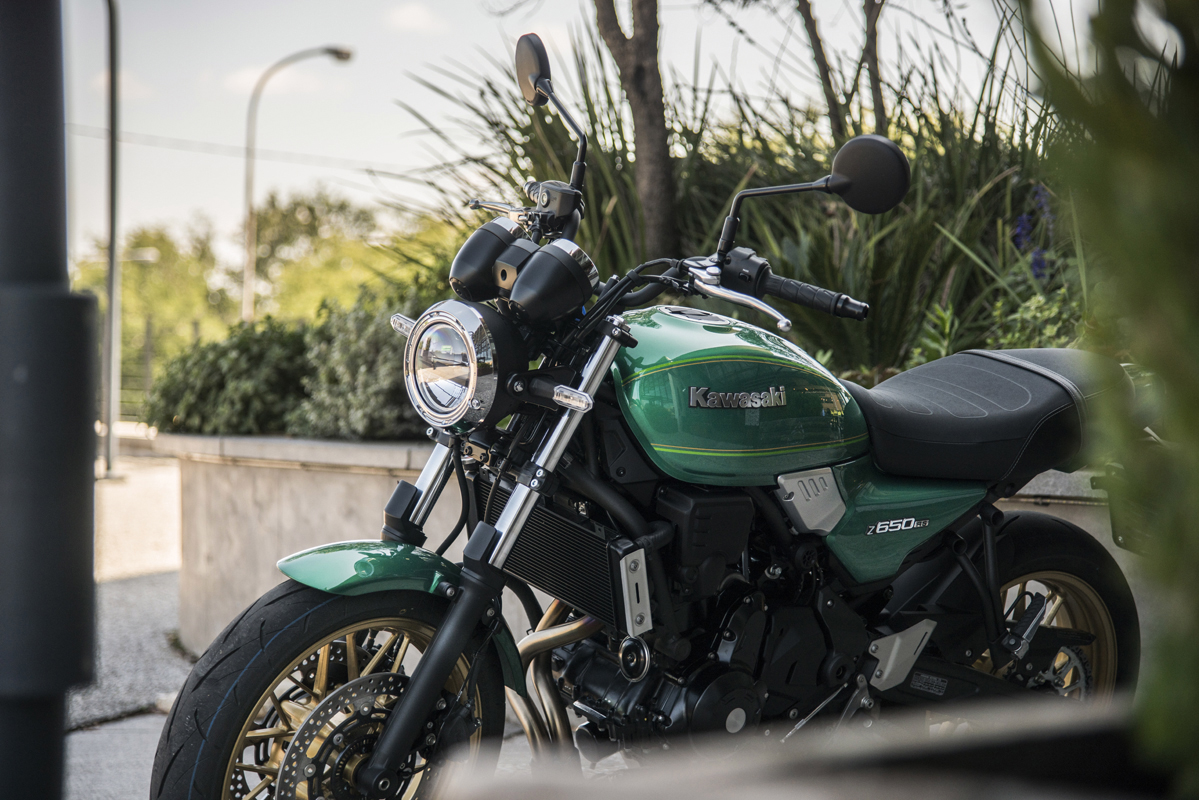
Just like a Riva wooden motorboat, a Grand Piano or a modern classic Rolex watch, what the Z650 RS doesn’t have in electronics or features is of no importance, it would take away from its minimalistic classic nature—a practical and timeless piece. Unlike a Riva boat, the Z650 RS won’t cost you an arm and a leg and is happy to be ridden daily. As we speak Kawasaki SA has just over a handful left at dealers and is selling this classic Zed for R149,995. In today’s economy, the Z650 RS should be a nearly 200k motorcycle, so get to your nearest Kawasaki dealer in haste and get one while you still can—commute in style without having to sell your kidney.
Let the good time roll…
Kawasaki Z650 RS
For more information on the bike featured in this article, click on the link below…




